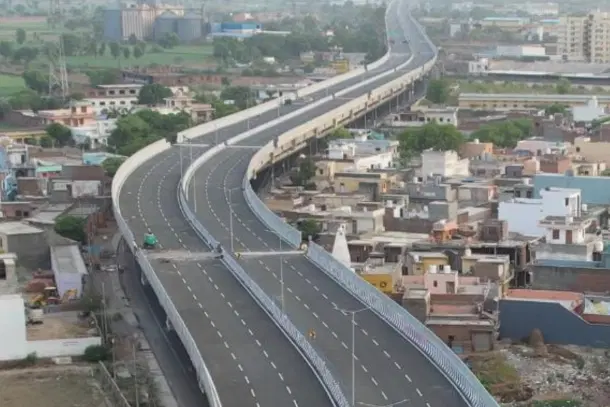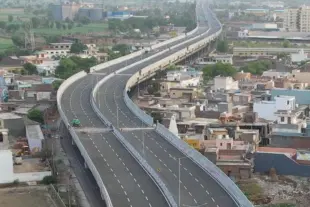News Brief
Delhi-Dehradun Expressway Set For October Completion, To Cut Travel Time To Just 2.5 Hour
Kuldeep Negi
Jul 23, 2025, 02:51 PM | Updated 03:23 PM IST
Save & read from anywhere!
Bookmark stories for easy access on any device or the Swarajya app.


The much-awaited Delhi-Dehradun expressway is likely to be completed by October this year, the Central government has said.
Spanning approximately 210 kilometers, this six-lane access-controlled expressway is designed to reduce travel time between Delhi and Dehradun from the current 6.5 hours to around 2.5 hours.
The Delhi-Dehradun Expressway, starting from Akshardham Temple, Delhi would pass through Baghpat, Baraut, Muzaffarnagar, Shamli and Saharanpur (Uttar Pradesh) and culminate at Dehradun.
The expressway is being developed at an approximate cost of nearly Rs 12000 crore, with a designated speed of 100 km per hour.
In a written reply to a question in the Rajya Sabha on Wednesday (23 July), Union Minister of Road Transport and Highways, Nitin Gadkari, said, "The Dehradun-Delhi Access Controlled highway with a total capital cost of Rs 11,868.6 crore is targeted for completion by October 2025
The expressway also includes a 12 km long elevated wildlife corridor, the longest in India, to ensure safe passage for animals near Rajaji National Park.
The expressway, would have a spur towards Haridwar and would also connect to Char Dhaam Highway, thus enhancing the connectivity to the hill stations and pilgrimage sites of Uttarakhand and Uttar Pradesh.
This infrastructure project aims to transform connectivity while prioritising safety and environmental conservation.
The expressway incorporates cutting-edge design features, including a 12-km elevated wildlife corridor, six animal underpasses, and two elephant underpasses, ensuring safe passage for animals along the route from Ganeshpur to Dehradun.
Additional provisions include a 340-meter-long, three-lane tunnel at Datkali in Dehradun, constructed at a cost of Rs 1,995 crore.
Key infrastructure along the expressway includes:
16 entry and exit points
113 underpasses for vehicular and light traffic
76 km of service roads
29 km of elevated roads
62 bus shelters
Its strategic route is expected to benefit commuters, tourists, and freight operators alike.
Kuldeep is Senior Editor (Newsroom) at Swarajya. He tweets at @kaydnegi.





